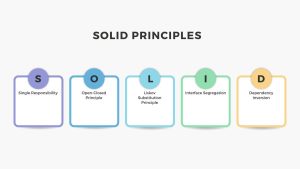Imagine a world where every idea can be shared, every line of code can be studied and improved, and everyone—from technology students to large corporations—can work together to create common products. That is the world of open source.
Open source is not just about code that can be viewed and modified. It is a philosophy of technology—where freedom of creativity, collaboration, and the power of community come together to create breakthroughs beyond imagination. Thanks to open source, millions of developers around the world have built remarkable technologies together, from the Linux and Android operating systems to today’s artificial intelligence projects.
In this article, let’s explore what open source truly is, why it has gained the trust of the global tech community, its advantages and limitations, and more importantly, how it has been shaping and continues to shape our digital lives.
1. What is Open Source?
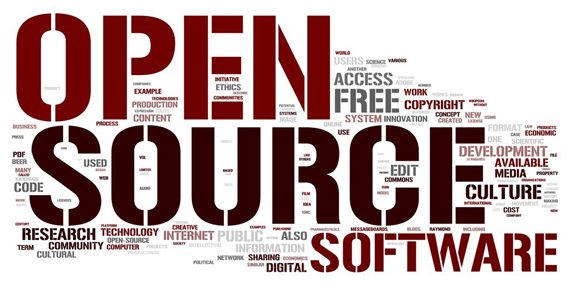
Open source software is software whose source code is publicly available and comes with a license that allows the community to use and develop it. At its core, it is built on four fundamental freedoms.
- Freedom to use – anyone can download and run the software for any purpose.
- Freedom to study – the source code is publicly available, allowing everyone to understand how the software works.
- Freedom to modify – users have the right to change and improve it to suit their own needs.
- Freedom to distribute – the original or modified versions can be shared with the community.
These characteristics create a clear distinction from commercial software: open source emphasizes transparency and freedom of innovation, where users are not just “passive customers” but can also become “active contributors.” However, the use and distribution of open source software must still comply with the accompanying licenses, such as MIT, Apache, or GPL, since each defines different rights and obligations.
2. Key Advantages of Open Source
1. Transparency
Unlike closed-source software, open-source software allows anyone to access and read the code. This ensures transparency: users, security experts, or independent organizations can verify that there is no hidden malicious code, backdoors, or suspicious operations. As a result, the software becomes more trustworthy in the eyes of the community.
2. Cost Savings
One of the main reasons open-source software is favored is that it comes with no licensing fees. Businesses can save hundreds of thousands to millions of dollars by replacing commercial software with open-source solutions (for example: using Linux instead of Windows Server, or LibreOffice instead of Microsoft Office). For individuals, this means access to powerful tools completely free of charge.
3. Flexibility
Open-source software allows for customization according to needs. You can modify, add or remove features, and integrate it with your own systems instead of being constrained by the limitations set by vendors. This is a huge advantage for businesses seeking tailored solutions rather than “off-the-shelf” ones. For example, many technology companies modify the Linux kernel to create an optimized operating system for their devices.
4. Safety & Security
Many people mistakenly believe that open-source software is less secure. In fact, thanks to thousands of developers worldwide contributing to detecting and fixing bugs, open-source software is often updated faster. When a vulnerability is disclosed, the community can release a patch within hours or days, rather than waiting for a commercial vendor to address it.
5. Strong Community
Another major advantage is the vast support ecosystem: forums, social media groups, wikis, official documentation, tutorial videos. When encountering difficulties, you are not dependent on a single vendor but can seek help from a global community. This diversity makes learning, troubleshooting, and product development much easier.
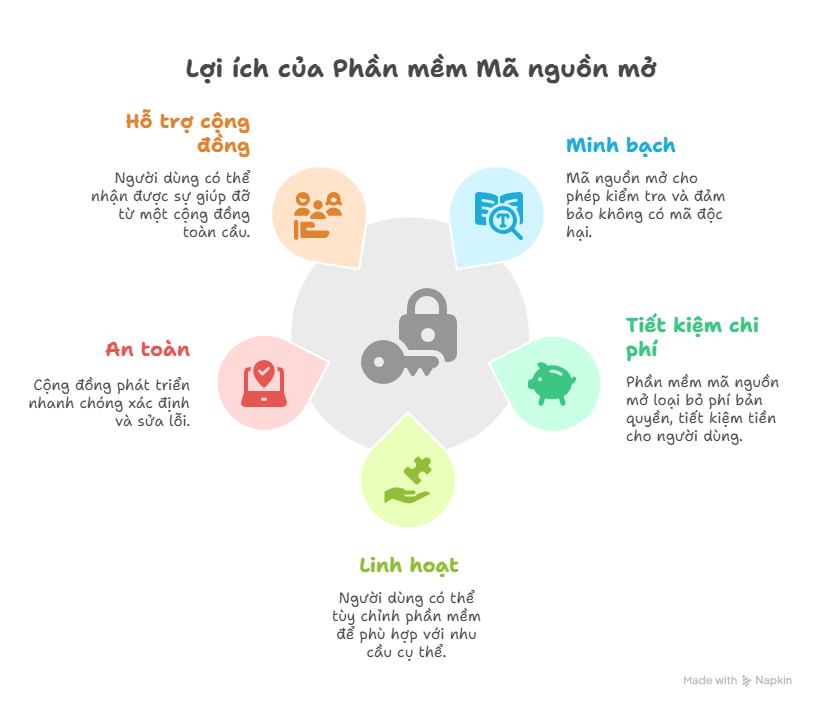
3. Limitations to Consider
1. Lack of Official Support
Commercial software often comes with after-sales service and a technical team ready to assist when issues arise. With open-source software, this is not always the case. Users mainly rely on the community — forums, discussion groups, online documentation. While support resources are abundant, they are voluntary and lack a clear Service Level Agreement (SLA). For large businesses, this can pose a risk unless they opt to purchase support packages from third parties (e.g., Red Hat provides support services for Linux).
2. Less User-Friendly for General Users
Many open-source software solutions are still technically oriented, requiring certain knowledge to install, configure, or customize. For example, an ordinary user can easily install Microsoft Office with just a few clicks, but switching to LibreOffice or LaTeX may be challenging due to different interfaces or usage methods. This makes open-source software sometimes less user-friendly for the general public.
3. Fragmentation
Flexibility and freedom also lead to the drawback of fragmentation. The same project may have many different distributions, each with its own features and direction. A clear example is the Linux ecosystem: hundreds of distributions (Ubuntu, Fedora, Arch, Debian…) make it difficult for newcomers to choose, and businesses face challenges when trying to standardize systems. Fragmentation can also affect software compatibility, adding further challenges to practical deployment.
4. Impact and Practical Applications of Open Source Software
- Driving Technological Innovation
- Open source allows the community to collaborate in development, contributing ideas and new features.
- As a result, the pace of innovation is faster than with closed-source software, creating many creative products beyond initial expectations.
- Cost Savings and Increased Accessibility
- Businesses, educational institutions, and individuals can use open-source software for free or at a low cost.
- This helps lower technology barriers, especially in developing countries.
- Enhancing Transparency and Security
- Since the source code is publicly available, users can inspect, detect, and fix vulnerabilities quickly.
- This creates higher trust and reduces the risk of hidden “backdoors” in the software.
- Encouraging Collaboration and Knowledge Sharing
- Open-source projects create a global collaborative environment where developers from many countries work together.
- This is an important way to learn, improve skills, and build a sustainable technology community.
- Diverse Practical Applications
- Many familiar products such as Linux, Android, Apache, MySQL, and Python are open source.
- Businesses use them to build infrastructure, startups leverage them to develop products quickly, and schools use them for teaching.
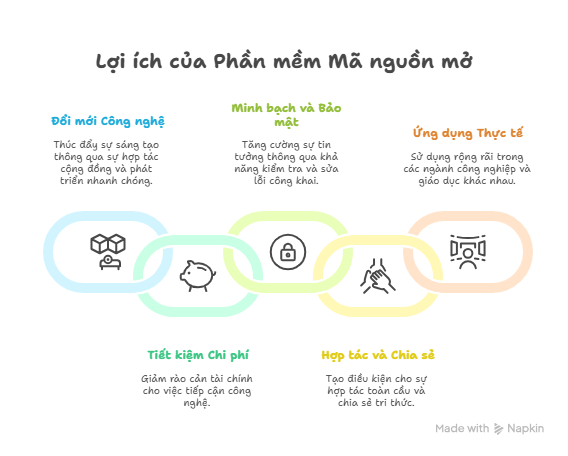
5. Notable Open Source Projects
Open source is no longer an abstract concept; it has truly penetrated every corner of modern technology life.
- Operating Systems: If you are holding an Android phone, you are using an open-source product every day. Android is built on the Linux kernel — the very “heart” of millions of servers powering the Internet worldwide.
- Office Applications: LibreOffice is the “free sibling” of Microsoft Office, yet it still offers sufficient tools for word processing, spreadsheets, and presentations. Many government agencies and organizations have chosen LibreOffice to reduce licensing costs without affecting efficiency.
- Browsers: When you open Firefox to browse the web, or use Chrome (based on Chromium), you are directly experiencing the results of the open-source community. It is remarkable that tools serving billions of users are developed under such a free collaborative model.
- Programming Languages & Frameworks: Python, Django, ReactJS… are not only developers’ tools but also the driving force behind the applications you use every day: from social networks and e-commerce to AI applications. All of these are open-source projects, continuously improved by a global community.
Look around, and you will see open source everywhere: in the smartphone you hold, in the servers that keep websites running, and in the applications you use to chat or shop online. In other words, open source is the silent foundation of today’s digital world.
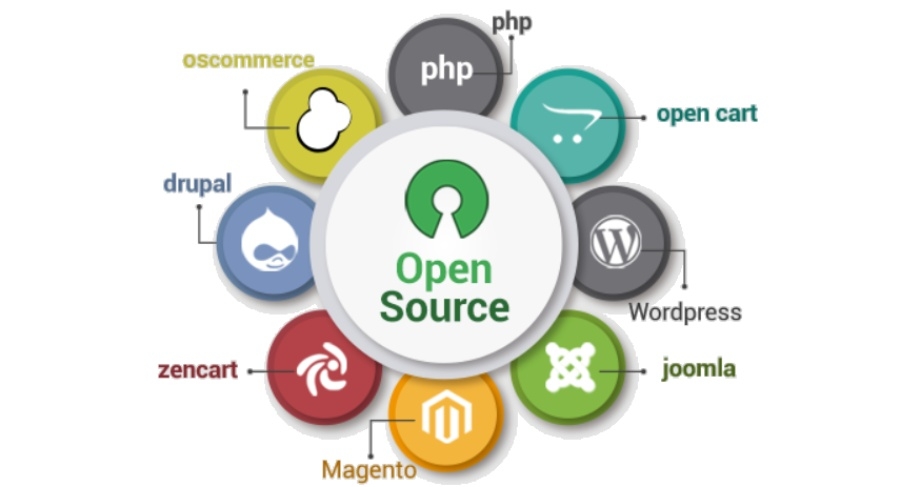
6. The Future of Open Source
- Businesses: Beyond cost savings, open source is gradually becoming a strategy for innovation and ecosystem building, with major corporations like Google, Microsoft, and Amazon heavily investing in it.
- AI & Cloud: Frameworks like TensorFlow and PyTorch demonstrate that AI will be closely tied to open source, ensuring transparency, fairness, and global accessibility.
- Security & Trust: Transparency allows the community to verify and reduce the risk of backdoors; many organizations and governments will prioritize open source to ensure security.
- Global Community: GitHub, GitLab, and other platforms will become knowledge hubs, forming a “digital international” where developers worldwide collaborate.
- Innovation & Fairness: Helps reduce monopolies, opens opportunities for access to technology for startups, education, and developing countries.
- Cross-Disciplinary Expansion: Open source will extend into hardware, science, education… moving toward an era of shared knowledge for humanity.
7. Common Misconceptions About Open Source
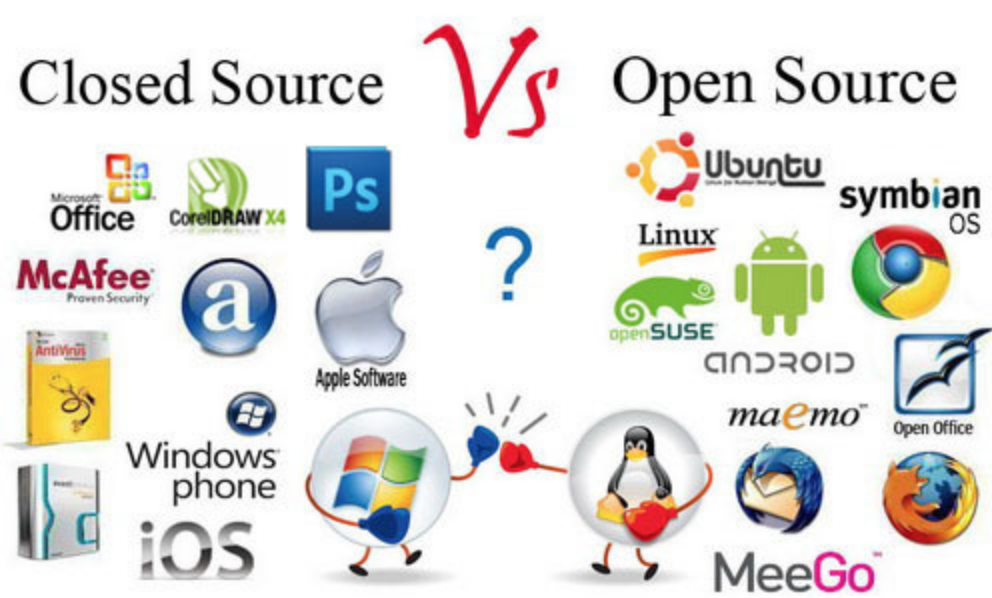
- “Open source = free”
- Misconception: Many people think that open-source software is always completely free of charge.
- Reality: Most open-source projects can be downloaded and used free of charge, but that does not mean there are no costs. Businesses often need to pay for deployment, maintenance, staff training, or purchase technical support packages (e.g., Red Hat Enterprise Linux).
- Correct Understanding: Open source means freedom to use, modify, and distribute — not necessarily “free of charge.”
- Misconception: Many people think that open-source software is always completely free of charge.
- “Open source is always more secure”
- Misconception: Because it is public, it is assumed to be absolutely secure by default.
- Reality: Public access makes it easier for the community to detect security flaws, but this is only effective if the project has a strong enough community to regularly review and patch it. A project with few maintainers can still have serious vulnerabilities.
- Correct Understanding: Open source has the potential to be more secure due to transparency, but the level of security depends on the review processes, updates, and community involvement.
- Misconception: Because it is public, it is assumed to be absolutely secure by default.
- “Anyone can push code arbitrarily”
- Misconception: Because anyone can access it, anyone can edit the source code and it will automatically be added to the main project.
- Reality: Serious projects have maintainers or a core team that strictly control changes. All contributions must go through a process of code review, testing, and discussion before being merged. GitHub Pull Requests and GitLab Merge Requests are examples of this transparent yet rigorous process.
- Correct Understanding: Open source encourages contributions, but it does not mean “anarchy”; it still follows quality standards and community governance.
- Misconception: Because anyone can access it, anyone can edit the source code and it will automatically be added to the main project.
8. Conclusion
Open source is not just lines of code shared for free, but also a “spark” for global creativity and collaboration. This open spirit has helped millions of small ideas connect to create significant advancements in technology.
And the wonderful thing is that anyone can participate. You can start by using open-source software, then gradually contribute a line of code, a translation, or simply share your experience. Every contribution, no matter how small, helps make this community stronger.
Therefore, step boldly into the world of open source — a place where creativity has no limits and everyone can make a difference.
9. References
Reference Books
- “Producing Open Source Software” – Karl Fogel
- “The Cathedral and the Bazaar” – Eric S. Raymond
- “Open Source for the Enterprise” – Dan Woods & Gautam Guliani
Trang web và công đồng



